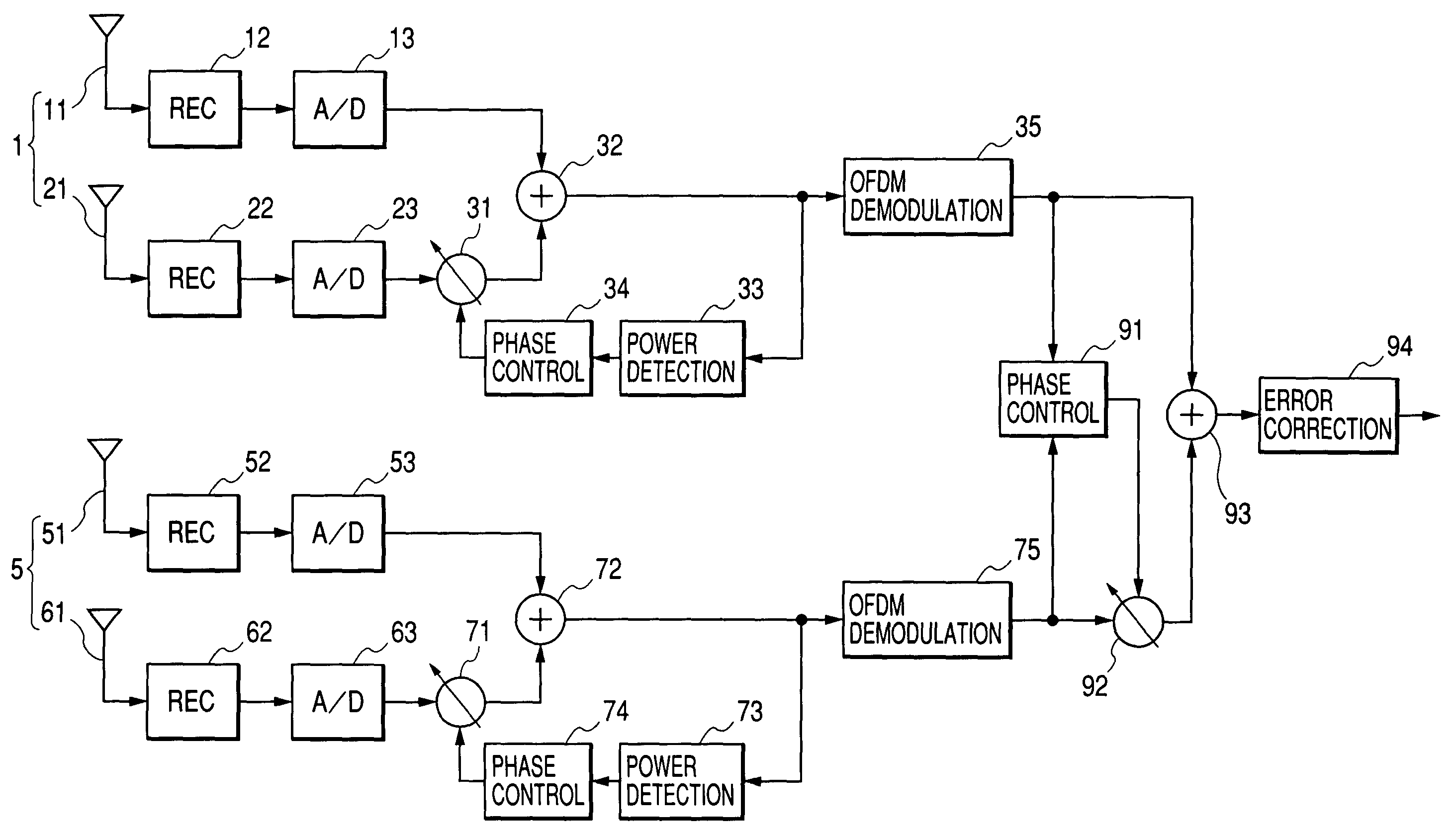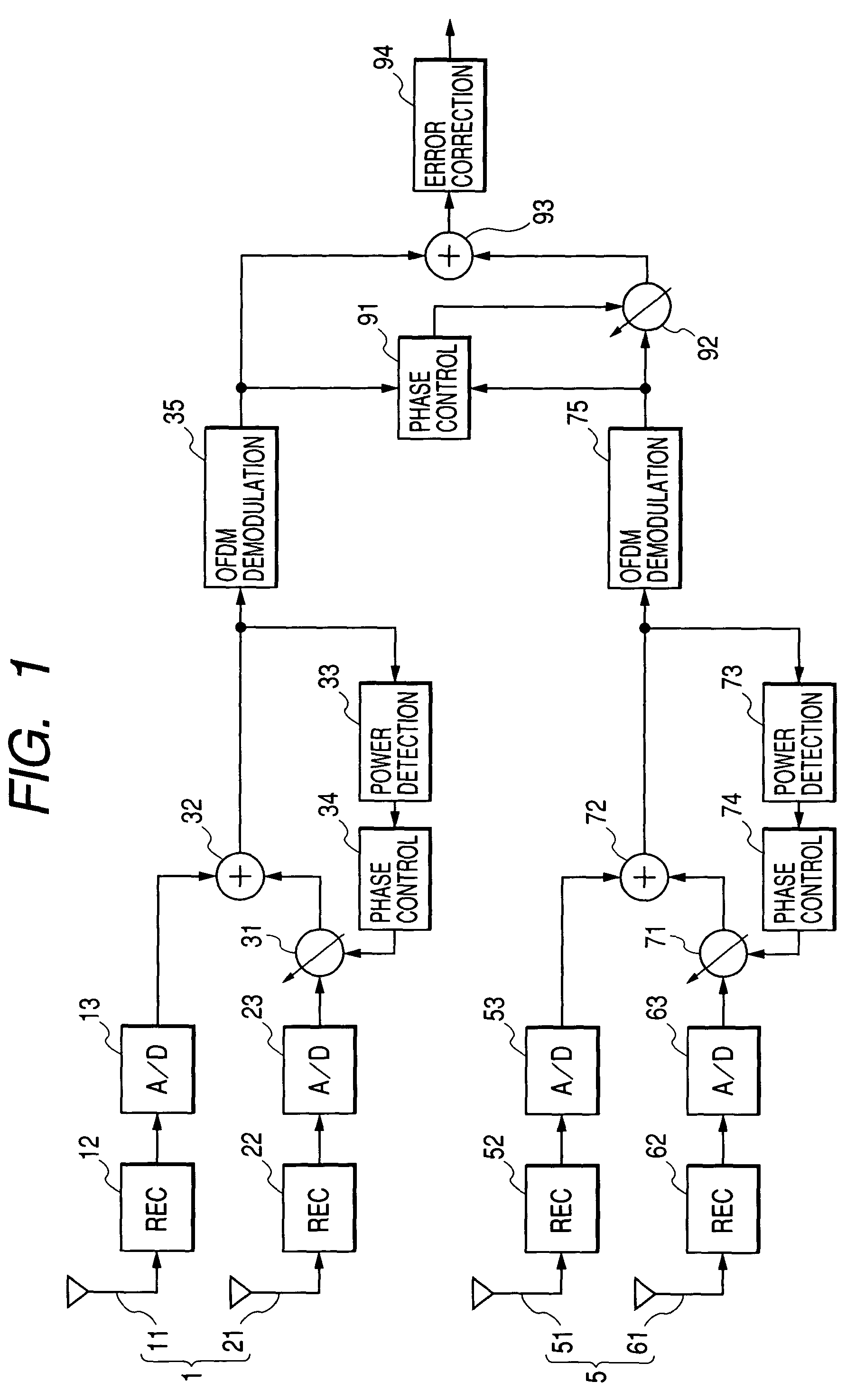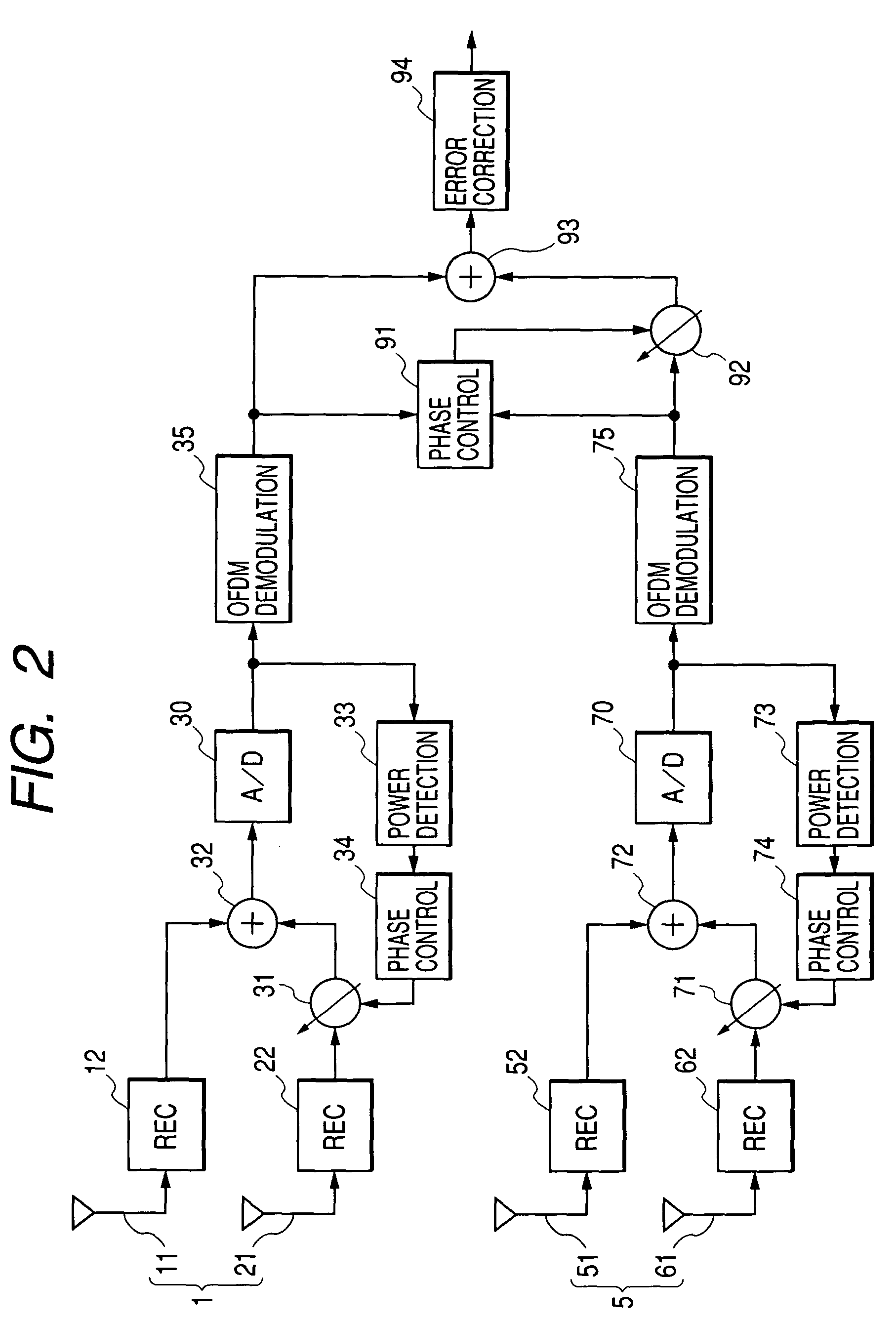OFDM receiver for easily synchronizing base band signal
a receiver and baseband technology, applied in the field ofofdm receivers, can solve the problems of low synchronization efficiency, reduced image quality, and high cost of receivers, and achieve the effect of reducing the number of ofdm demodulating, synchronizing baseband signals, and reducing cos
- Summary
- Abstract
- Description
- Claims
- Application Information
AI Technical Summary
Benefits of technology
Problems solved by technology
Method used
Image
Examples
Embodiment Construction
[0026]An OFDM receiver of the present invention will next be explained in accordance with the drawings. FIG. 1 shows the construction of a first embodiment mode. FIG. 2 shows the construction of a second embodiment mode. FIG. 3 shows the construction of a third embodiment mode.
[0027]First, in FIG. 1, plural antennas (shown in the case of four antennas) 11, 21, 51, 61 for receiving an OFDM modulated high frequency signal are arranged in places separated from each other on a vehicle as one example. Here, antennas 11 and 21 and antennas 51 and 61 belong to separate antenna groups. A receiving portion 12 and an A / D converter 13 are sequentially cascade-connected to one specific antenna 11 in a first antenna group 1. A receiving portion 22, an A / D converter 23 and a first phase shifter 31 are sequentially cascade-connected to another antenna 21 except for the specific antenna 11. A first adder 32 is connected to the output terminal of the A / D converter 13 and the output terminal of the f...
PUM
 Login to View More
Login to View More Abstract
Description
Claims
Application Information
 Login to View More
Login to View More - R&D
- Intellectual Property
- Life Sciences
- Materials
- Tech Scout
- Unparalleled Data Quality
- Higher Quality Content
- 60% Fewer Hallucinations
Browse by: Latest US Patents, China's latest patents, Technical Efficacy Thesaurus, Application Domain, Technology Topic, Popular Technical Reports.
© 2025 PatSnap. All rights reserved.Legal|Privacy policy|Modern Slavery Act Transparency Statement|Sitemap|About US| Contact US: help@patsnap.com



